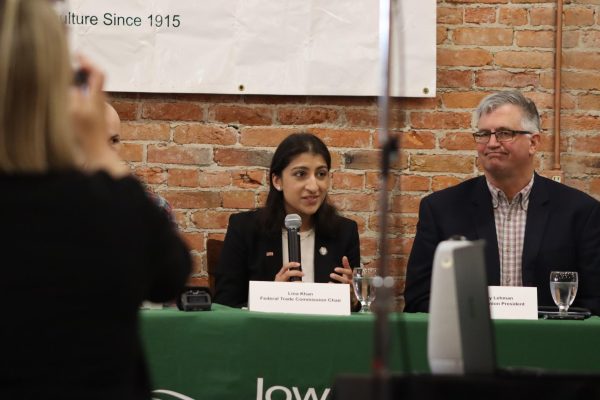Two ISU professors lead the STRIPS project
November 12, 2014
Strips of prairie are being incorporated into agricultural fields as part of the STRIPS project at Iowa State to battle the changing climate’s effect on crops.
STRIPS stands for Science-based Trials of Row crops Integrated with Prairie Strips.
This new conservation practice takes small patches of prairie and integrates them into the row crop field. The small patches of prairie within row crops help to create efficient, non-wasteful agriculture.
Two ISU professors, Matthew Helmers and Lisa Schulte-Moore, are the leaders of the STRIPS project.
“Farmers are realizing that we are living in a different climate today than we were historically. The practices that worked in the 1980s aren’t working anymore,” said Schulte-Moore, professor in the department of natural resource ecology and management.
Schulte-Moore said that prairie strips can help keep farmland productive.
The Leopold Center for Sustainable Agriculture at Iowa State has been providing funds and developing outreach programs for the STRIPS conservation project since 2007 when STRIPS was introduced.
“We were one of the first supporters of the STRIPS project,” said Laura Miller, communications specialist at the Leopold Center.
Established in 1987, the Leopold Center for Sustainable Agriculture’s goal is to reduce negative environmental and social impacts of farming and to generate new methods of profitable farming that conserve natural resources.
“The really cool thing about the STRIPS practice is that you get a combination of advantages,” said Schulte-Moore.
Benefits of STRIPS include improvements in water and soil quality, soil conservation, biodiversity, wildlife habitats and opportunities for biomass production. Prairie strips also render farmland that is pleasing to look at.
“Prairie strips provide benefits that all Iowans can appreciate in some way, shape or form,” said Helmers, professor in the department of agricultural and biosystems engineering.
The STRIPS team at Iowa State performed an experiment in 2008 that converted 10 percent of the agricultural land at the Neal Smith National Wildlife Refuge to prairie strips. The result was a 95 percent decrease in the amount of soil lost due to runoff.
“As we look at Iowa, the importance of keeping soil in place is becoming more and more important,” said Helmers. “We have a practice that can help farmers do that.”
Although Helmers and Schulte-Moore are the leaders of this project, the results of STRIPS can be attributed to many people.
Schulte-Moore said that the members of the STRIPS team come from a variety of academic backgrounds including agronomy, hydrology, entomology, economics and social sciences.
“We are collecting data from looking at all of these different realms,” said Schulte-Moore. “We also work together as a group to analyze the data.”
The STRIPS team also works externally with non-governmental organizations, government agencies and private farmers.
“One of the most exciting things for me about STRIPS is the fact that we are now working with people on their private farms,” said Schulte-Moore.
Miller said that 20 Iowa farms are expected to implement prairie strips into their row crop fields by the end of November.
“We need to celebrate our success,” said Helmers. “We also know that there is still a lot of work to do.”
















